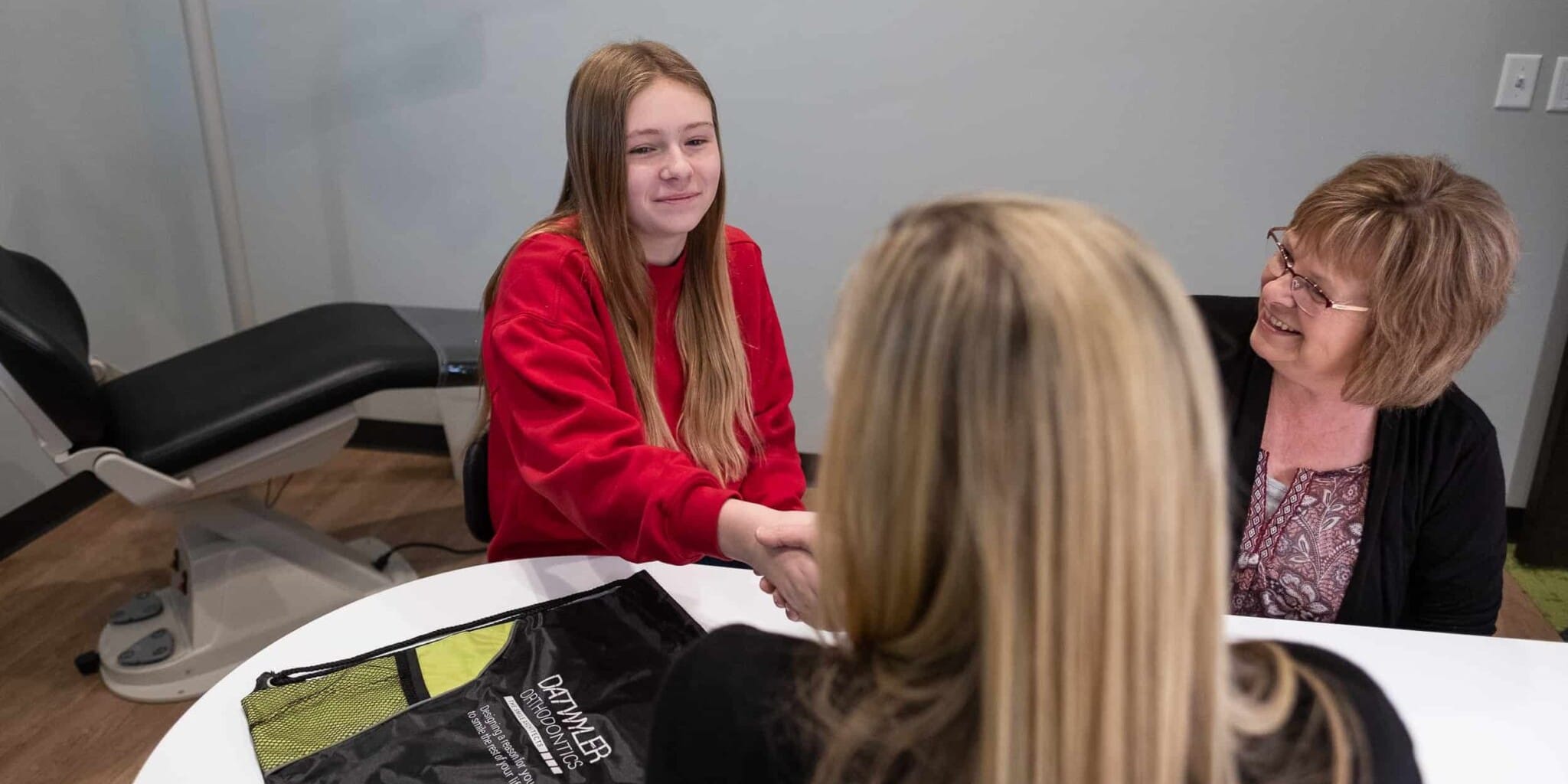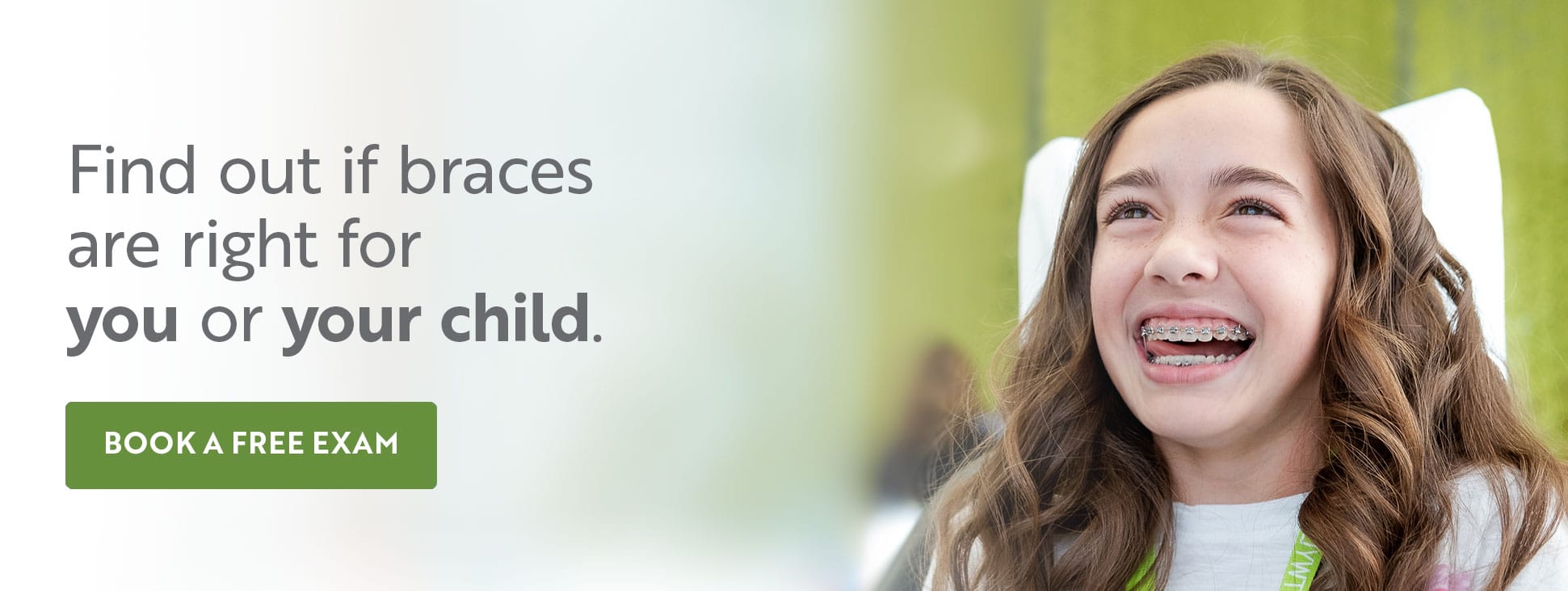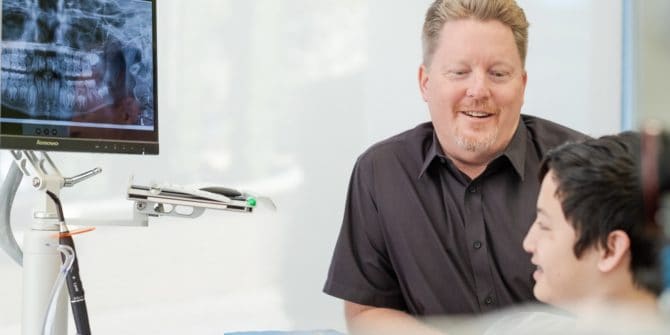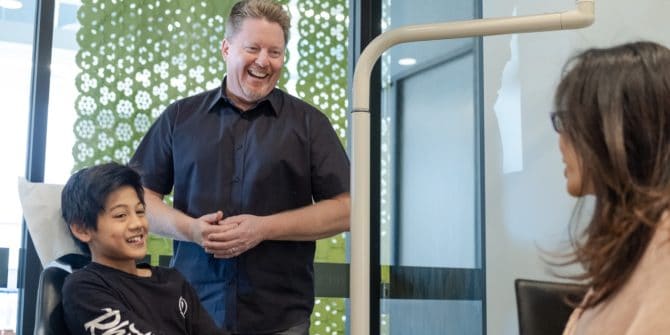It’s time! You’re ready to get braces or Invisalign and create the smile of your dreams. You probably think it’s a simple process: get your braces on or get fitted for your clear aligners, wait several months, have your braces removed, and voila! The smile of your dreams is there! In actuality, there are several phases to braces and Invisalign treatment that includes careful planning. These stages of braces or Invisalign treatment are crucial to creating the absolute best results for your smile!
At Datwyler Orthodontics, we will guide you through the braces stages of treatment. We’ll always aim to follow the plan we discuss in your initial consultation but can make any necessary adjustments along the way. We will explain each step to you, including your part in the plan and how important it is to be diligent in following instructions. We’ll work together as a team to create the smile you’ve always wanted!
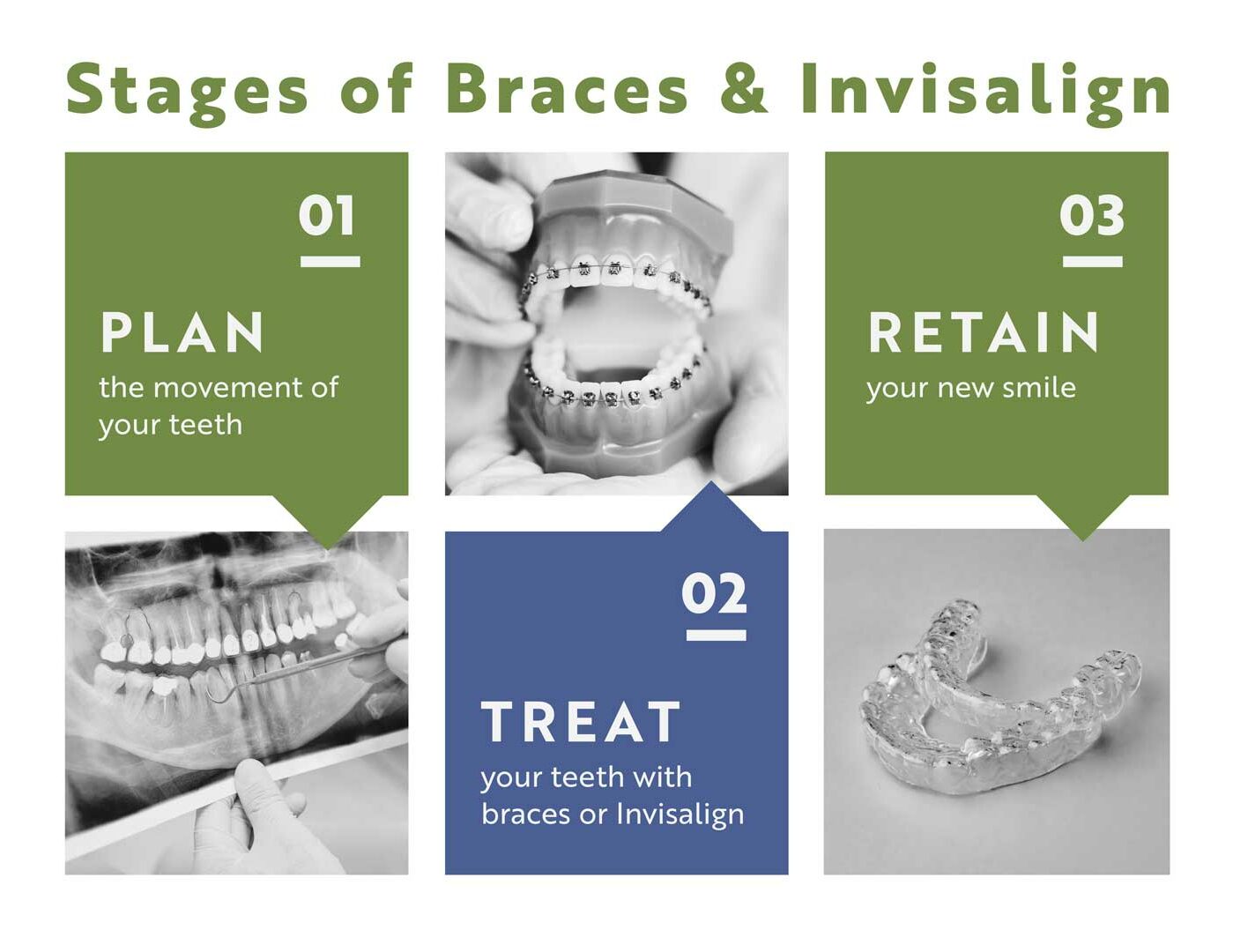
Stage 1 of Braces or Invisalign: Planning
The first stage of braces or Invisalign treatment is one of the most crucial — the planning stage. This is where we build the roadmap to the smile of your dreams. Dr. Datwyler’s job is to figure out where each tooth should go and how best to get all of your teeth aligned to get you the healthiest smile possible!
The first step in the planning process is to schedule your free consultation. We will bring you in for a full examination, including digital imaging and x-rays. This will help us determine what unique dental issues you have and provide some insight into why you have them. Why is that important? Because not only do we want to provide a beautiful smile, we want to address the root cause of your concerns to ensure they don’t return after you complete your treatment!
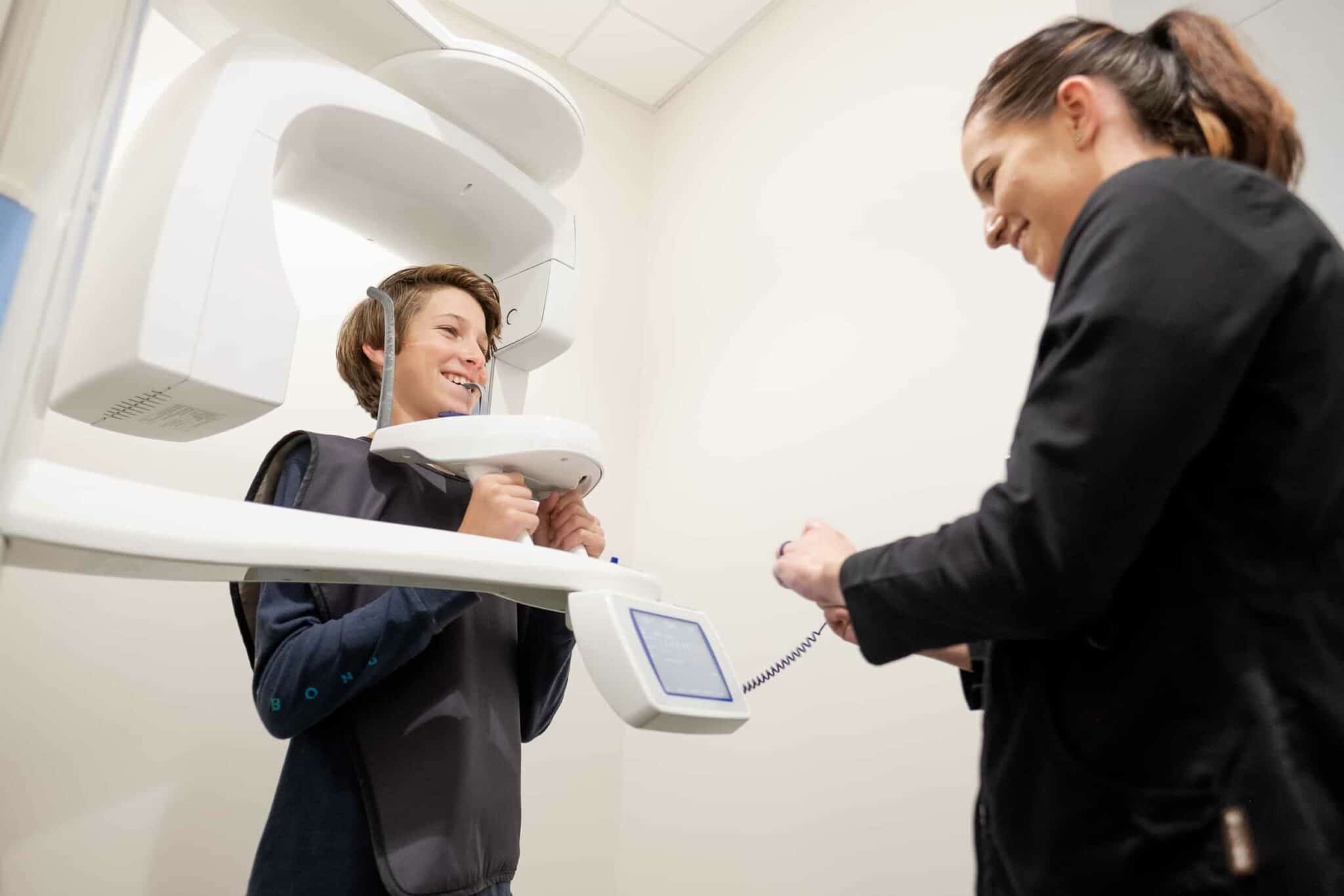
Once we’ve figured out what problems need to be addressed, we can formulate a plan. Are braces the way to go, or are you a good candidate for Invisalign? We take your preferences into account, but we want to ensure that you have the most success possible. Our recommendations will be for the product that provides the best results for you, whether that’s our Pitts21 self-ligating braces or Invisalign clear aligners.
Once we know the problems and the solution, it’s time to lay the path that will get you there! We create a detailed treatment plan to decide how your braces or Invisalign will move each tooth into its proper position. Your plan will also include steps for the best way to retain that beautiful healthy smile after your main treatment is complete.
That all takes place before a single bracket goes on your teeth!
Stage 2 of Braces or Invisalign: Treatment
Once the plan is laid out, it’s time for the real magic to begin. The next stage of braces is to actually get your braces placed or your initial set of Invisalign aligners fit for you.
Once you’re in the braces stage of treatment (or Invisalign), you should start seeing small differences as time progresses and you get further into your treatment. Your braces or clear aligners will begin moving your teeth by applying gentle, steady pressure. This pressure leads to “bone remodeling,” or the breaking down of bone and the building of new bone that shifts the teeth into place. Where your braces or clear aligners place the most pressure determines where and how far your teeth will move. These shifts will also change your bite. Bite correction is achieved with elastic wear. After a while, you may notice less popping of your jaw when you chew or less jaw pain after a meal. That means your Invisalign or braces are doing the job!
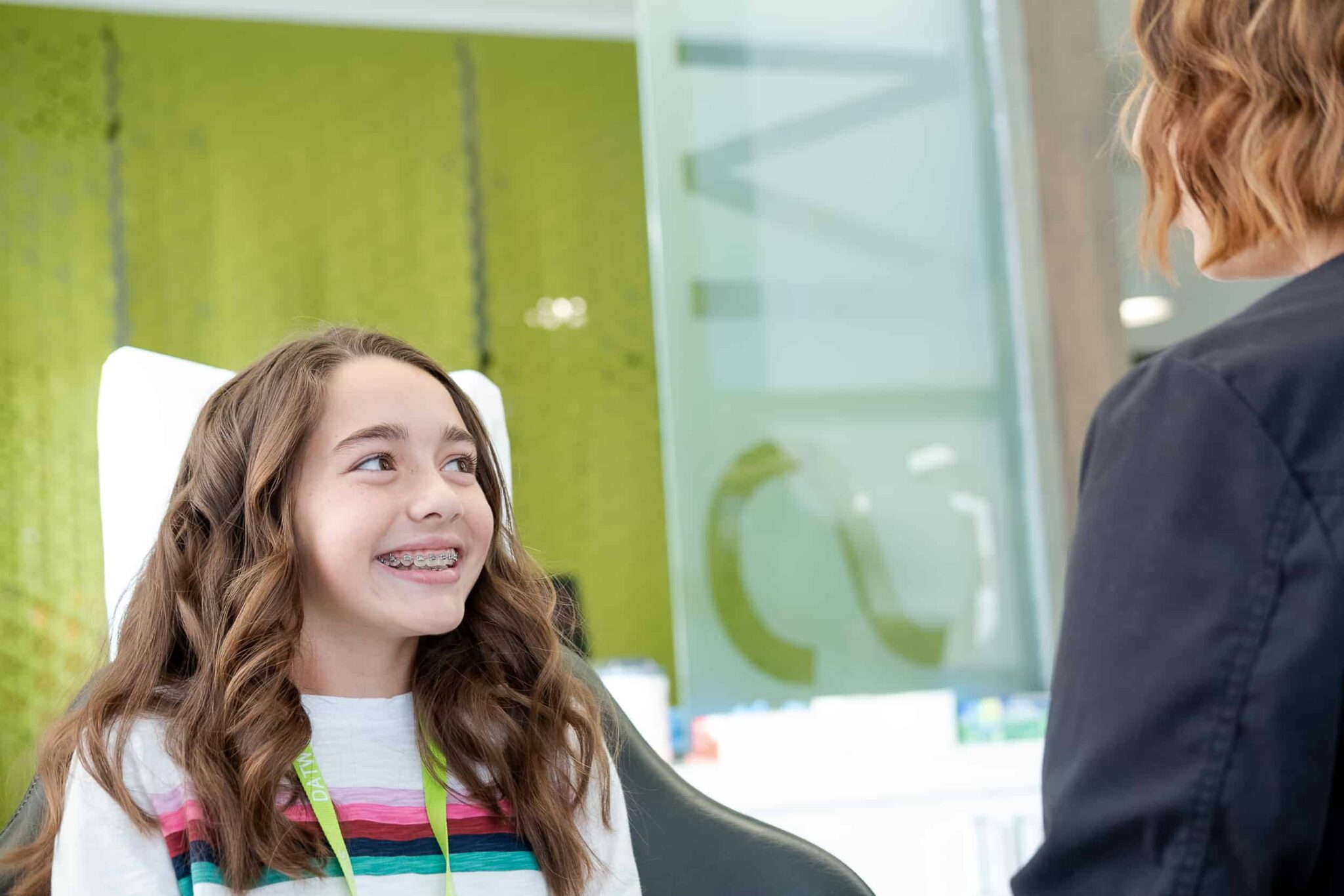
So what all happens in the braces process month by month? Different things happen at various times during your treatment. Dr. Datwyler specifically plans how and when each tooth in your mouth moves. It’s like a choreographed dance! Each tooth must be moved a specific way at a designated time in your progression so that all of the other teeth can be moved into their proper positions. So the first few months, we may work on aligning your teeth and then closing gaps between your teeth. Then the next few months, we may be correcting your bite with elastics. This will help eliminate your crossbite or overbite. We want to ensure your back molars line up properly, which can lead to a major decrease in any jaw pain that was previously caused by misalignment.
When you think of braces, do you normally think of the crazy colors of elastic ties? Those ties actually serve a purpose; they hold the archwire to the bracket. But our Pitts21 Self-Ligating Bracket System doesn’t need them in order to create the perfect smile for you. The Pitts21 system uses self-ligating braces that hold the archwire with a little door instead of the old ties. This means less friction on the mouth, which is usually caused by the ties. The Pitts21 braces also have rounded brackets, making them more comfortable and harder to get food stuck there. That means they’re easier to keep clean with proper oral hygiene.
Invisalign works the same way. We figure out what teeth need to move and create clear aligners to move your teeth. This step-by-step process is vital in producing the best results possible, which is why we are so careful in planning every aspect of your treatment.
Once the heavy lifting is done, the braces finishing stages consist of detailing the final look of your new smile. We make minor adjustments to ensure everything is straight and exactly where it needs to be. Usually, the details are minor by this point, and your teeth are lining up exactly where they need to be.
After that, it’s time for your braces or Invisalign to come off, but your treatment isn’t completely over. That’s when the final stages of your braces begin!
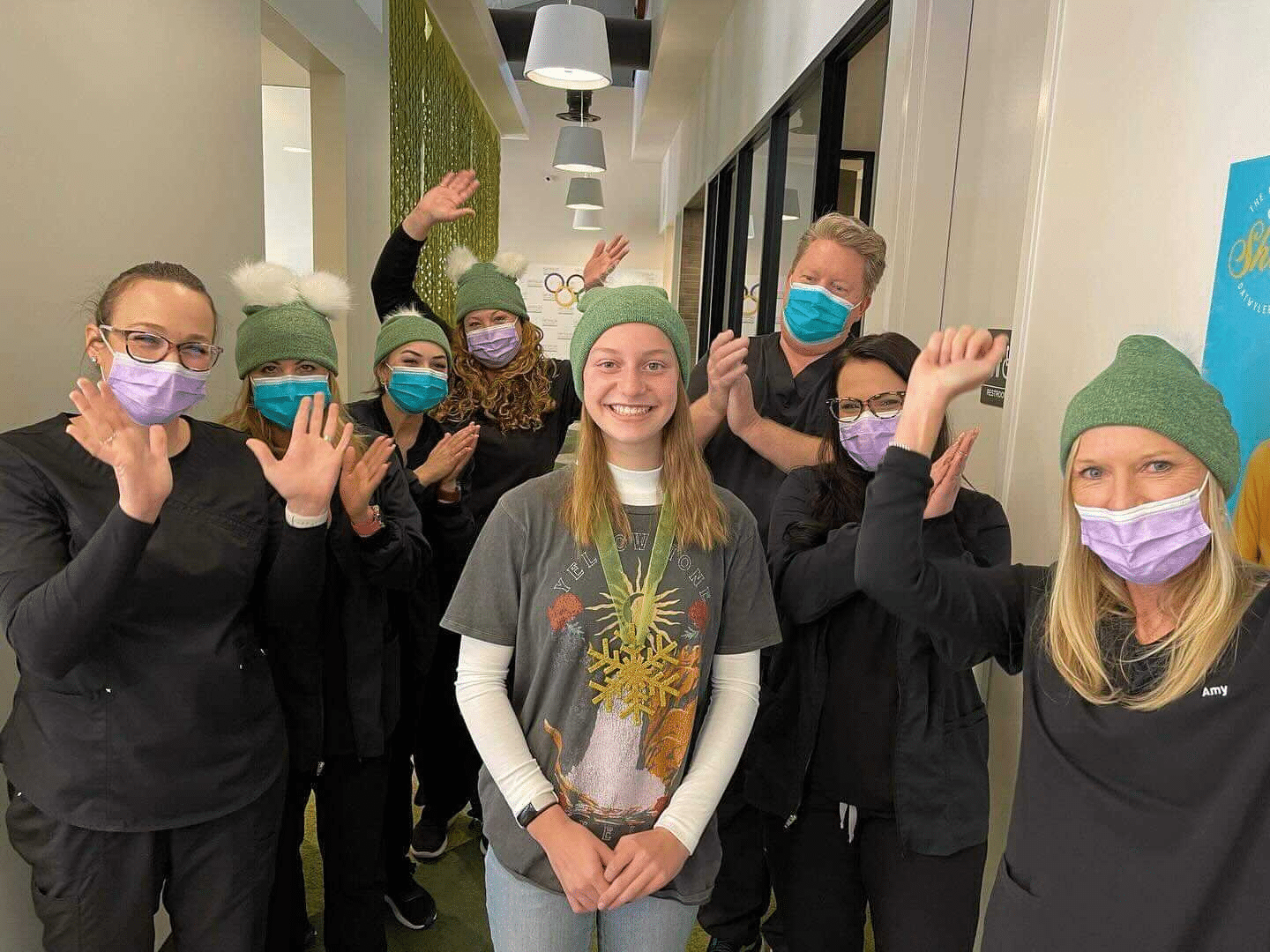
Stage 3 of Braces or Invisalign: Retaining Your Smile
After all the planning and work, it’s finally time to get your braces or Invisalign off. Months of following your orthodontist’s instructions, months of making sure your oral hygiene was top-notch, months of checkups have finally paid off. You’ve reached the braces finishing stages, and you finally have the smile of your dreams! That’s it; you’re done forever…right?
Well…not quite.
You’ve reached the last phase in the stages of braces — retainers. Now that you have that gorgeous smile, you have to maintain it. That’s where your new retainers will come in.
Your teeth have spent months on the move, in part because the bone has been resculpting itself but also because the ligaments that hold your teeth have been loosened, allowing the teeth to move. It’s taken months to get them loose and to get the bone to reshape itself, so you can imagine they don’t go back to their normally stiff selves overnight.
That means that without something to hold your teeth in place while the ligaments tighten and the bone hardens, your teeth will begin shifting and moving back to their original positions. That’s the last thing you want, right?
That’s where retainers come in. Retainers hold your teeth in place while the ligaments tighten and the bone hardens in your jaw. Retainers keep your teeth from moving during this crucial phase of braces treatment. During this time, you’ll need to wear your retainers nearly all day, taking them out only to eat or to floss and brush your teeth. They must be worn at least 22 hours a day to be the most effective.
After several months of near-constant use, you’ll be able to reduce the time you need to wear your retainers. Usually, you must wear them nearly all day for the first 6-9 months after your braces or Invisalign come off. In some cases, it can be up to a year. Each person is different and each person will have a different timeline, but Dr. Datwyler will make sure you know what we recommend for you.
After that time, you can reduce the hours you must wear your retainers. Most people wear them overnight, which is enough to keep the teeth in position. How long do you need to wear them? In truth, you’ll need to wear your retainers overnight for the rest of your life to keep your teeth perfectly straight. Otherwise, they will shift slowly over time.
Why does this happen? Our bones become weaker and don’t retain the minerals necessary to maintain their strength as we get older. This includes the bones in your jaw, which deteriorate and alter the structure of your face. As these bones reshape, they can cause teeth to move. That’s why it’s important to keep wearing your retainers even as you age.
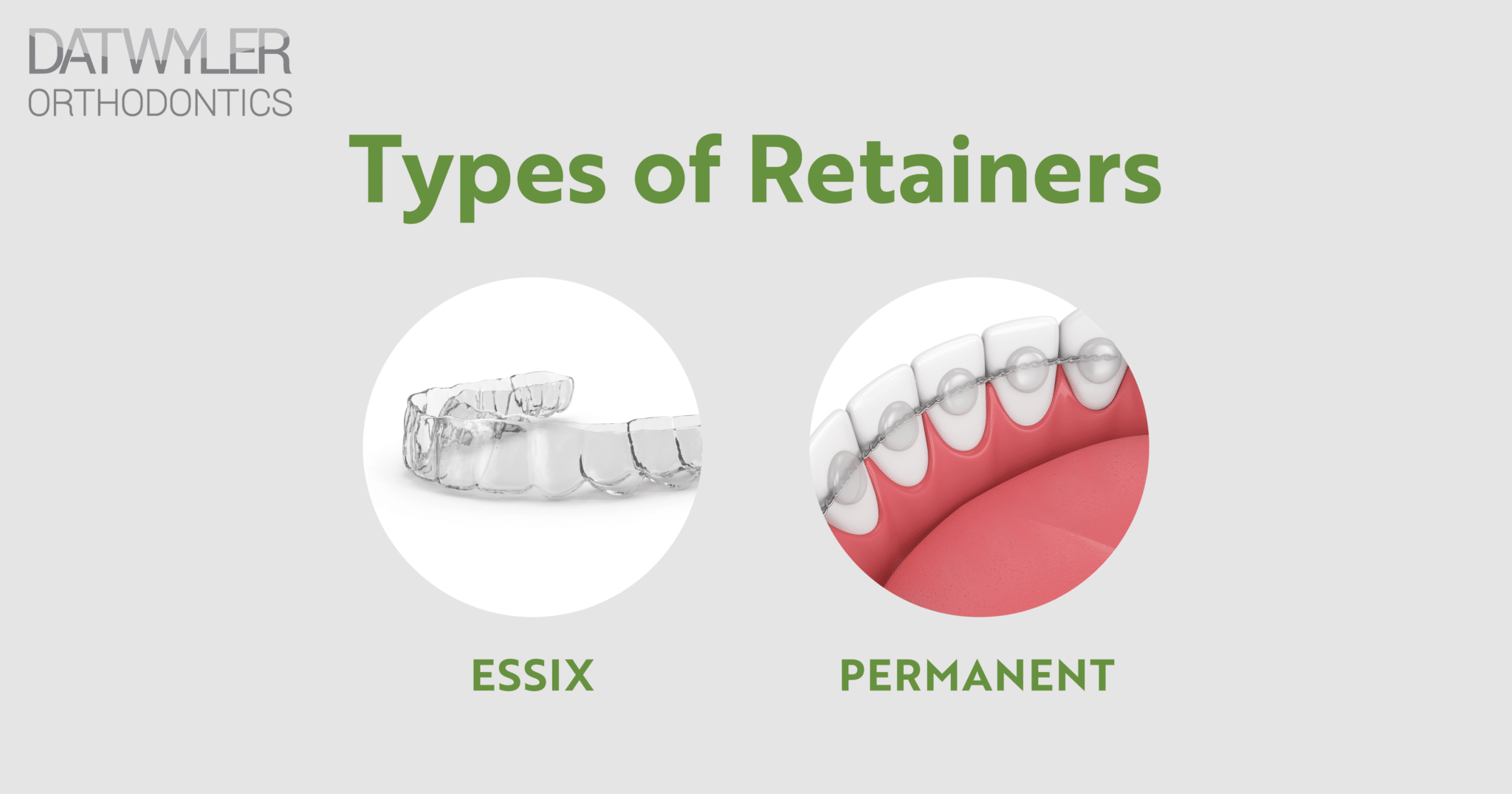
Types of Retainers
There are two main types of retainers we offer at Datwyler Orthodontics: Essix Retainers and Permanent Retainers. You’ll use one or a combination of these two types of retainers to keep your teeth straight from now on! Let’s explore these two types of retainers.
- Essix Retainers: These are clear, plastic retainers similar to Invisalign clear aligners. These clear retainers are designed to be nearly invisible, compared to traditional retainers that have a wire visible on the front of your teeth while being worn. Essix Retainers are removable but still need to be worn nearly all the time for the first few months. Invisalign has its own brand of Essix-style retainers called Vivera Retainers. Even if you wore braces and not Invisalign, Essix-style retainers or Vivera Retainers might be an option available to you. It’s one of the options we will discuss with you during your treatment plan.
- Permanent Retainers: Permanent Retainers are exactly how they sound — they’re permanent, meaning they aren’t removable except by a professional orthodontist. Permanent Retainers are wires that fit onto your teeth on the tongue side. This makes them nearly invisible to see. They are bonded to your teeth with a special adhesive that hardens and keeps the retainers in place permanently; which is also why these are sometimes called bonded retainers. These retainers aren’t removable, so you don’t have to worry about how many hours you wear them or if you could lose them. However, they can make it a bit more difficult to keep your teeth clean in the areas around the retainers. Most permanent retainers are only fitted for the bottom teeth. Due to how you bite your teeth together, top permanent retainers tend to break off and not be as effective. Dr. Datwyler recommends either clear retainers on top and bottom or a combination of two types of retainers: a permanent retainer on the bottom and a clear Essix retainer on top.
We will work with you to determine what type of retainer is best for you and your lifestyle because it’s so important for you to wear your retainers, especially in the first few months. Will clear retainers work? Is it easier to have a permanent retainer so you don’t have to worry about the upkeep? We’ll help you decide what works best.
Guiding You Through the Stages of Braces
The most important part of treatment with braces or Invisalign is to find the right team to guide you through the process. Datwyler Orthodontics has been voted the Folsom Telegraph’s Best of the Best Orthodontist in El Dorado Hills for the last nine years in a row! We believe that every patient is a rock star, and we give you the VIP treatment you deserve. We’re a group of professionals dedicated to giving you the best orthodontic experience and best results possible. Picking the team that will guide you through all phases of braces or Invisalign treatment is crucial, and we take that responsibility seriously while remaining committed to our promise that you will have fun being a Datwyler Rockstar!
If you’re still unsure, stop in and let us show you what we can do for you. Start by scheduling a free consultation with Datwyler Orthodontics and let us show you the path to the smile of your dreams!


